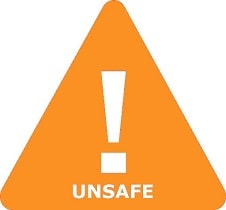Is (E)-1-(Bis-(p-fluorophenyl)methyl)-4-cinnamylpiperazine dihydrochloride Safe in Breastfeeding
Question
I am a breastfeeding mother and i want to know if it is safe to use (E)-1-(Bis-(p-fluorophenyl)methyl)-4-cinnamylpiperazine dihydrochloride? Is (E)-1-(Bis-(p-fluorophenyl)methyl)-4-cinnamylpiperazine dihydrochloride safe for nursing mother and child? Does (E)-1-(Bis-(p-fluorophenyl)methyl)-4-cinnamylpiperazine dihydrochloride extracts into breast milk? Does (E)-1-(Bis-(p-fluorophenyl)methyl)-4-cinnamylpiperazine dihydrochloride has any long term or short term side effects on infants? Can (E)-1-(Bis-(p-fluorophenyl)methyl)-4-cinnamylpiperazine dihydrochloride influence milk supply or can (E)-1-(Bis-(p-fluorophenyl)methyl)-4-cinnamylpiperazine dihydrochloride decrease milk supply in lactating mothers?
(E)-1-(Bis-(p-fluorophenyl)methyl)-4-cinnamylpiperazine dihydrochloride lactation summary

- DrLact safety Score for (E)-1-(Bis-(p-fluorophenyl)methyl)-4-cinnamylpiperazine dihydrochloride is 5 out of 8 which is considered Unsafe as per our analyses.
- A safety Score of 5 indicates that usage of (E)-1-(Bis-(p-fluorophenyl)methyl)-4-cinnamylpiperazine dihydrochloride may cause serious side effects in breastfed baby.
- Our study of different scientific research indicates that (E)-1-(Bis-(p-fluorophenyl)methyl)-4-cinnamylpiperazine dihydrochloride may cause moderate to high side effects or may affect milk supply in lactating mother.
- Our suggestion is to use safer alternate options rather than using (E)-1-(Bis-(p-fluorophenyl)methyl)-4-cinnamylpiperazine dihydrochloride .
- It is recommended to evaluate the advantage of not breastfeeding while using (E)-1-(Bis-(p-fluorophenyl)methyl)-4-cinnamylpiperazine dihydrochloride Vs not using (E)-1-(Bis-(p-fluorophenyl)methyl)-4-cinnamylpiperazine dihydrochloride And continue breastfeeding.
- While using (E)-1-(Bis-(p-fluorophenyl)methyl)-4-cinnamylpiperazine dihydrochloride Its must to monitor child for possible reactions. It is also important to understand that side effects vary largely based on age of breastfed child and time of medication in addition to dosage.
- Score calculated using the DrLact safety Version 1.2 model, this score ranges from 0 to 8 and measures overall safety of drug in lactation. Scores are primarily calculated using publicly available case studies, research papers, other scientific journals and publically available data.
Answer by Dr. Ru: About (E)-1-(Bis-(p-fluorophenyl)methyl)-4-cinnamylpiperazine dihydrochloride usage in lactation
Calcium-channel-blocking drug which is a piperazine derivative antihistamine with sedative effects.Used in prophylaxis of migraines and dizziness. At latest update no published data on excretion into breast milk were found.It may increase prolactin level (from Cortelli Formisano 1985 to 1991).Despite its high protein-binding capacity, because of a very long half-life span (18 days), there is a higher risk of excretion into breastmilk. A known and safer alternative should be preferred until more published data on this drug related to breastfeeding is available, - e.g. Propranolol, Metoprolol, Sertraline, Escitalopram, Amitrptilina or Valproate for Migraine prophylaxis (Pringsheim 2012, Davanzo 2014) and Nimodipine, Betahistine or Ginkgo biloba for vertigo prophylaxis, especially in the neonatal period and in case of prematurity.
Alternate Drugs for Anti-vertigo Drug
Cinnarizine(Low Risk)
Betahistine(Low Risk)
Flunarizine Hydrochloride(Unsafe)
Difenidol Hydrochloride(Low Risk)
Diphenidol Hydrochloride(Low Risk)
